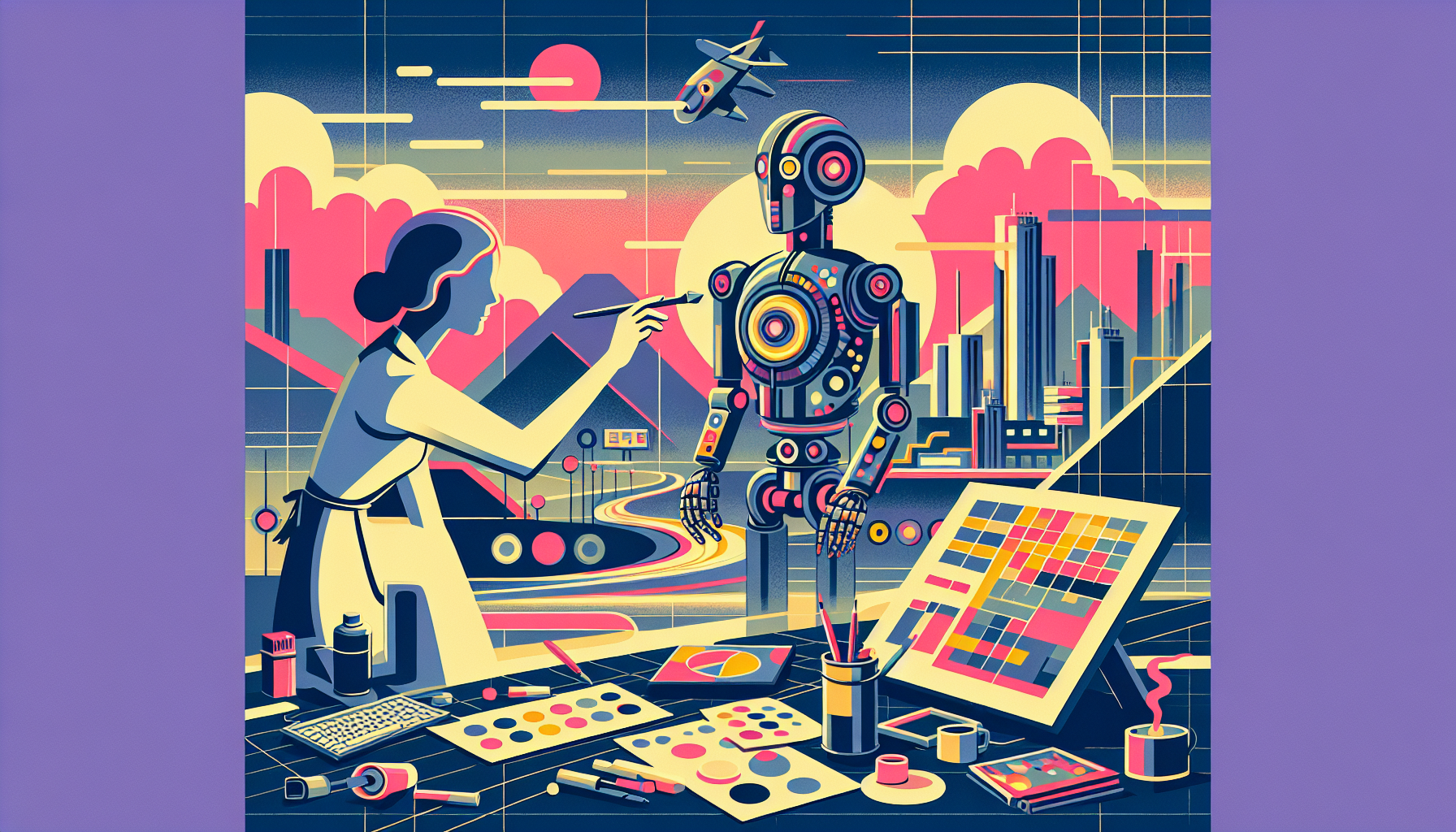If you’ve been anywhere near a screen in the last few years, you’ve seen it: a flurry of images, poetry, stories, and even music, all purportedly “created” by artificial intelligence. At first, it was fun—imagine your cat dressed as a Renaissance knight riding a bicycle through Paris. But then things got a bit strange. AI-generated art started winning competitions. Bookshelves filled with computer-authored novels. Some people cheered at the democratization of creativity, while others wondered—with growing concern—if something vital was being lost. If you’ve found yourself asking, “Is it right for a machine to make art?” be assured you’re not alone in this existential coffee-break.
What Is Creativity, Anyway?
First, a difficult question that philosophers and artists alike have wrestled with: What does it mean to be creative? For centuries, creativity has been hailed as one of the most prized human abilities—a mysterious blend of imagination, knowledge, and experience, giving rise to something new. When Michelangelo chipped away everything that didn’t look like David, he wasn’t just using logic. Paintings aren’t output, they’re expression.
AI, on the other hand, draws from mountains of existing images or text, learning their patterns until it can remix them into something “new.” But is combining old things in clever ways really what creativity is? Or does that definition risk shrinking the grandeur of human invention down to a sort of cosmic collage exercise?
Who Owns an Algorithm’s Art?
Let’s get practical for a second. When an AI generates a striking painting or writes an engaging short story, who owns it? The machine didn’t wake up with a sudden urge to paint sunflowers. Someone put in a prompt. Someone programmed the neural network. Someone built the hardware, trained the model, curated the training data.
Attribution gets blurry. Some artists argue that, since AI tools have devoured millions of human artworks to learn their craft, the resulting images should not be considered original in any meaningful sense. Should we credit the artists whose works were mashed together in the digital blender? Or does ownership belong to the user who typed “dog in a tutu climbing Everest” into an online prompt box? It seems even more complicated than figuring out who actually owns the office coffee mug labeled “World’s Best Boss.”
Does AI Art Take Jobs from Artists?
Another ethical dilemma is the age-old conflict between technical advancement and human livelihood. Just as the invention of the camera rattled portrait painters, so AI-generated art threatens the job security of illustrators, writers, musicians, and more. Commissioning a logo or soundtrack from an AI can take minutes—and costs a fraction of hiring a human.
Some argue this is progress. After all, technology has always put some jobs out to pasture—remember lamplighters and bowling alley pinsetters? Maybe artists should adapt, find ways to work with the new tools. But art isn’t just about efficiency. For many, creative work is also about meaning, belonging, and self-worth. The threat isn’t merely economic; it gnaws at our sense of purpose. It’s hard not to feel uneasy when an algorithm can out-draw you on your best day, and cheaper, too.
Distinguishing “Real” Art
People sometimes whisper, “It just doesn’t feel the same.” There’s an uncanny valley in AI art. We know, rationally, that the images are beautiful. The poems rhyme and the melodies work. But knowing there’s a person behind an artwork—their struggle, effort, and desire—adds invisible weight. When Van Gogh painted his Starry Night, we sense some echo of his sleepless longing in the brushstrokes.
This raises the question: Is an artwork valuable because of its output, or because of the process behind it? It’s a bit like receiving a handwritten letter compared to a form email, even if the message is the same. Curiously, we seem to care not just about what is made, but how, and why, it was made at all.
What Responsibilities Do Creators and Users Have?
Assuming we’re moving into a world of AI-powered creativity, what responsibilities do we share? For developers, considerations include transparency—acknowledging when art is AI-generated rather than passing it off as human work. They must think about bias too. AI models inherit the quirks and blind spots of their training data. Without care, the art world could become an echo chamber, reinforcing clichés or marginalizing less-represented voices.
For users, one responsibility is respect—toward human artists and the collective imagination on which AI has feasted. If you’re using computer-generated work, give credit where it’s due. And why not pay for human-made art when you can? Supporting the creators whose work feeds both the algorithms and our souls isn’t just ethical, it’s nourishing for the entire cultural ecosystem.
The Inevitable Mashup
Let’s be honest: AI isn’t going away. Like it or not, its paints are already on the palette. Some artists will lean into it, making satirical, beautiful, or downright weird works that merge human and algorithmic creativity. Others will double down on traditional methods—perhaps their art will take on new significance, like the vinyl record in the age of digital music.
We can demand thoughtful regulation—fair compensation for data sources, transparency, and perhaps a label for AI-generated works. We can have challenging conversations about what creativity means, and about which things we should preserve, not just for the sake of nostalgia, but because they make us more human.
In the End, a Shared Canvas
At its best, art reminds us that we aren’t alone—that someone, somewhere, sees the world a little like we do, or very differently. Whether crafted by hand or by code, creativity will likely keep surprising, delighting, and unsettling us in equal measure. Maybe the test isn’t whether AI can be creative, but what we do—individually and together—with this new paintbrush we’ve invented.
And as we marvel at what machines can produce, perhaps we also remember to look up from the screen. There are clouds in the real sky every bit as beautiful as any neural network could dream up—all you need to do is notice.

Leave a Reply